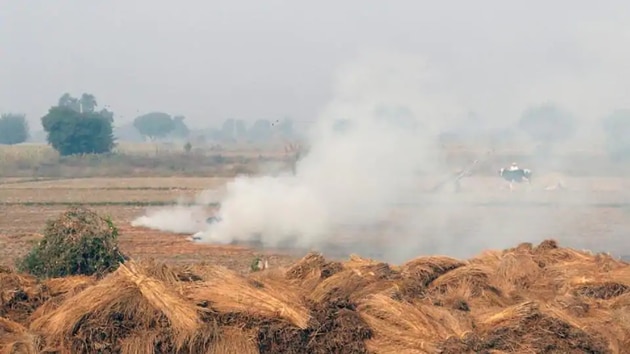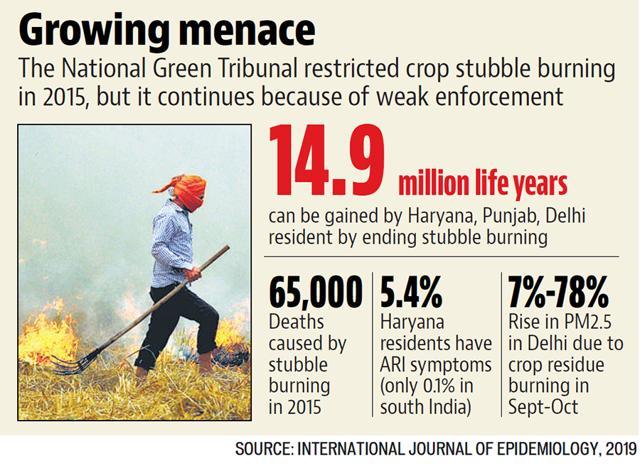Stubble burning cost $150 billion in 5 years: Study
The economic life years lost is estimated to be at least $150 billion over five years according to the IFPRI study published in the International Journal of Epidemiology.
A new study has found that people living in areas that see intense agricultural crop residue burning (ACRB) are three times as likely to contract acute respiratory infection (ARI) compared to those in other areas, with children under the age of five being particularly susceptible.

The study, by International Food Policy Research Institute (IFPRI) University of Washington estimated that eliminating crop residue burning could add 14.9 million life years in Haryana, Punjab and Delhi that would otherwise be lost to disability and disease.
The economic life years lost is estimated to be at least $150 billion over five years according to the IFPRI study published in the International Journal of Epidemiology.
The study arrives at its conclusions by merging fourth district-level health survey data for 2013 with satellite data on crop fires in Haryana. Andhra Pradesh and Tamil Nadu where there is no stubble burning were used for comparison.
The frequency of ARI symptoms in Haryana closely related to the number of fires observed, while in Andhra Pradesh and Tamil Nadu the frequency of ARI cases was far lower, the study found. Crop burning in Haryana and Punjab was most intense in 2013 according to the study. In Haryana, 5.4% of surveyed individuals reported ARI symptoms as compared to only 0.1% in the southern states compared.

Delhi has amongst the worst air quality in the world. According to another recent study by researchers from the Indian Institute of Technology (IIT)-Delhi, the University of California, University of Illinois, and reported by Hindustan Times last week, Delhi’s air pollution sees two spikes — one coinciding with the stubble burning season in Punjab and Haryana, and the other with a sharp dip in temperature.
Stubble burning during October and November in Punjab and Haryana contributes to air pollution in the national capital and creates toxic smog as it mixes with fog during winter every year. Even though overall air quality in 2018 was better than previous years, in December, Delhi encountered one of its longest spells of severe air.
In Haryana 17.5% of people interviewed for the study lived in districts reporting 100 or more crop fires per day. Researchers concluded that living in a district with more than a 100 crop fires per day is associated with a threefold higher risk of ARI. Other risk factors include being less than five years old, living in areas with vehicular congestion, and using biomass for cooking among others.
The Centre allocated Rs1,140.3 crore in the 2018 Budget for agricultural mechanisation in Punjab and Haryana aimed at clearing fields of stubble ahead of the new sowing season.
Last year, a Nasa study, authored by scientists Hiren Jethva and Omar Torres from the Universities Space Research Association used data from the Indian agriculture ministry to show that rice crop production post monsoon in north-western India increased by 0.18 million tonnes per year between 2002 and 2016. The rise is consistent with the rise in crop fire numbers in Punjab and Haryana, from about 8,000 in 2002 to about 16,500 in 2016.
Harinder Singh Lakhowal, general secretary, Bharatiya Kisan Union in Punjab, said, “We notice a rise in respiratory diseases during stubble burning season but most farmers don’t have access to straw management machinery (to deal with stubble and therefore resort to burning). The 40% subsidy being offered on the machinery is just not enough because the cost of machines have also increased. For example, the cost of rotavator has increased from ₹70,000 to ₹1.2 lakh last year. Farmers should be compensated properly for the diesel costs of running this machinery too.”



